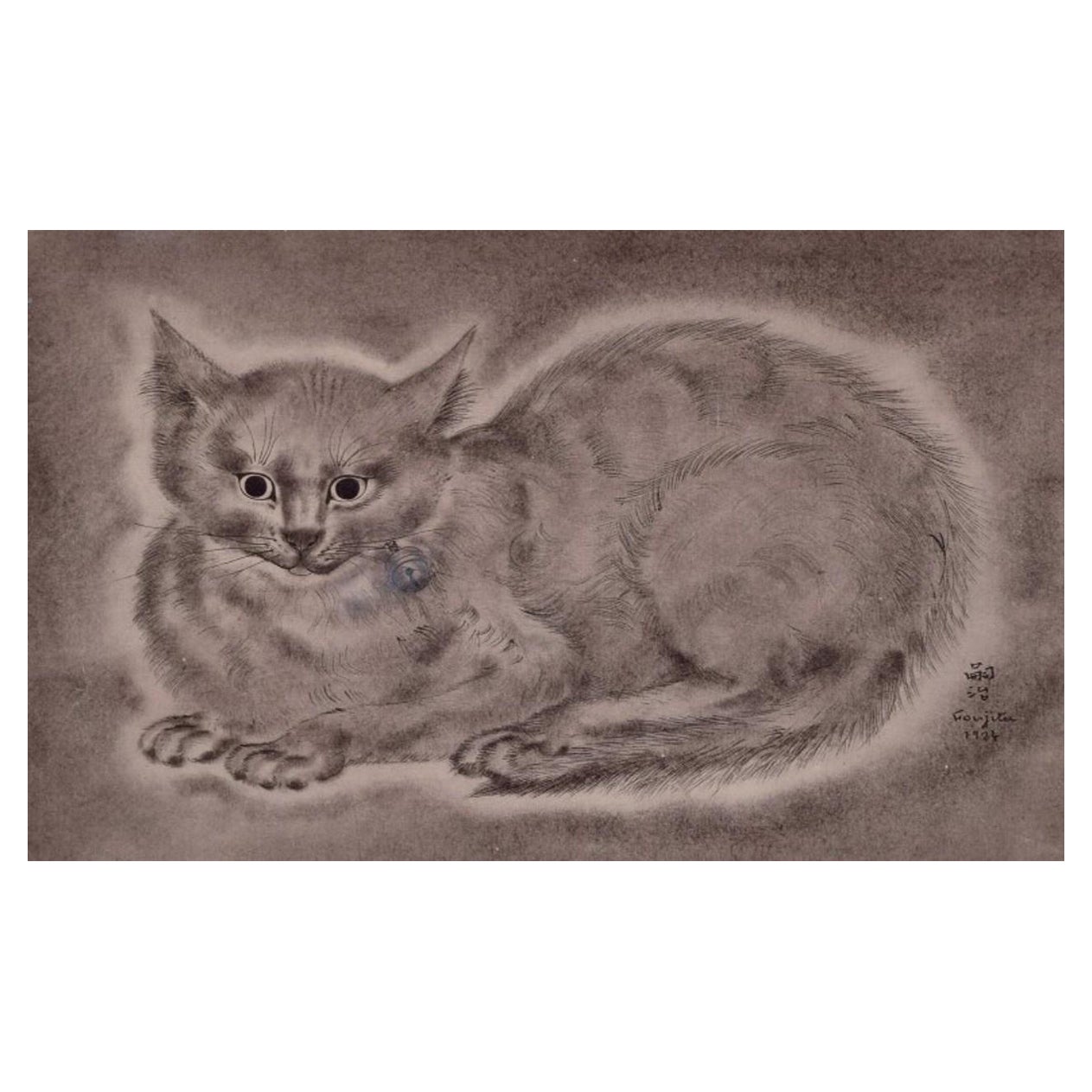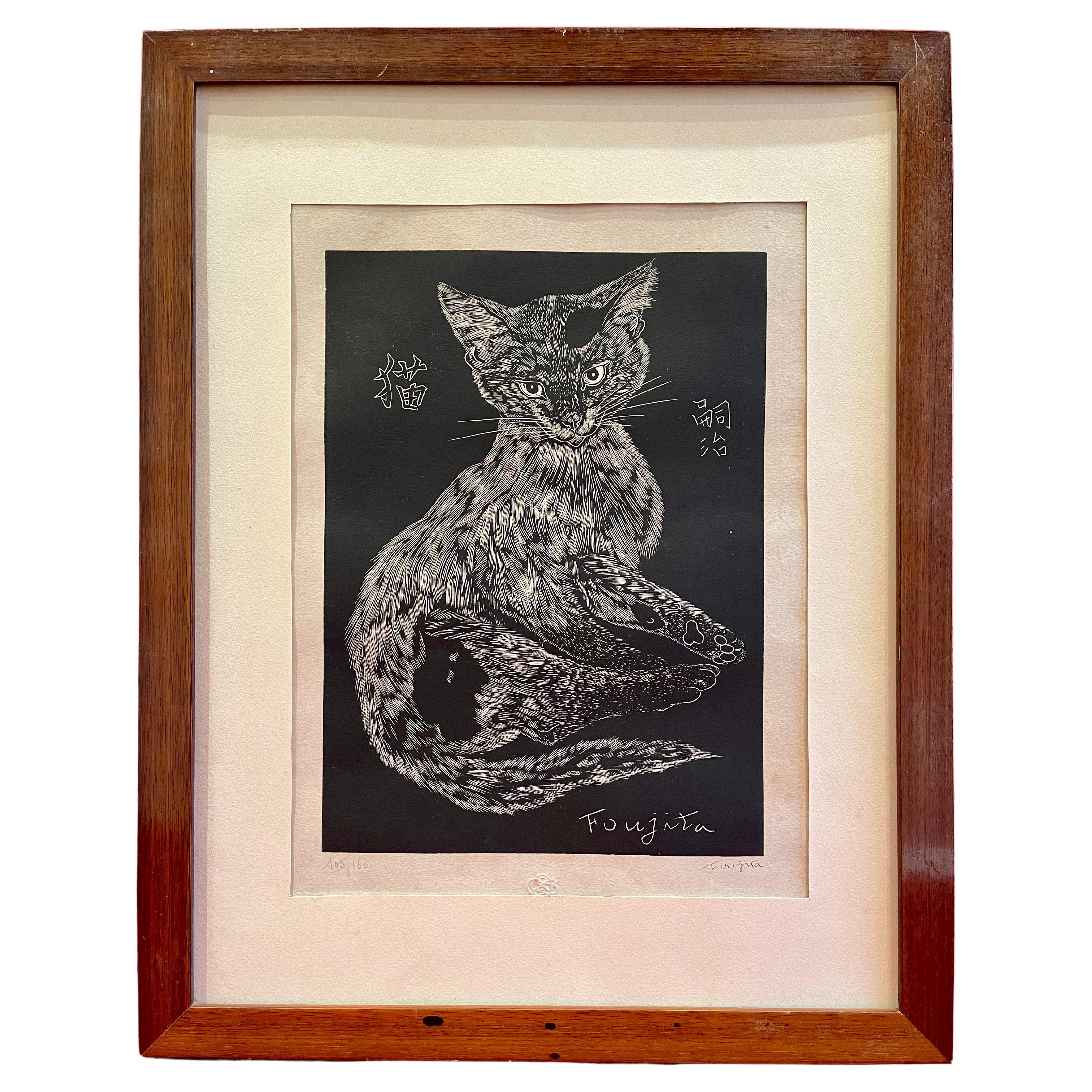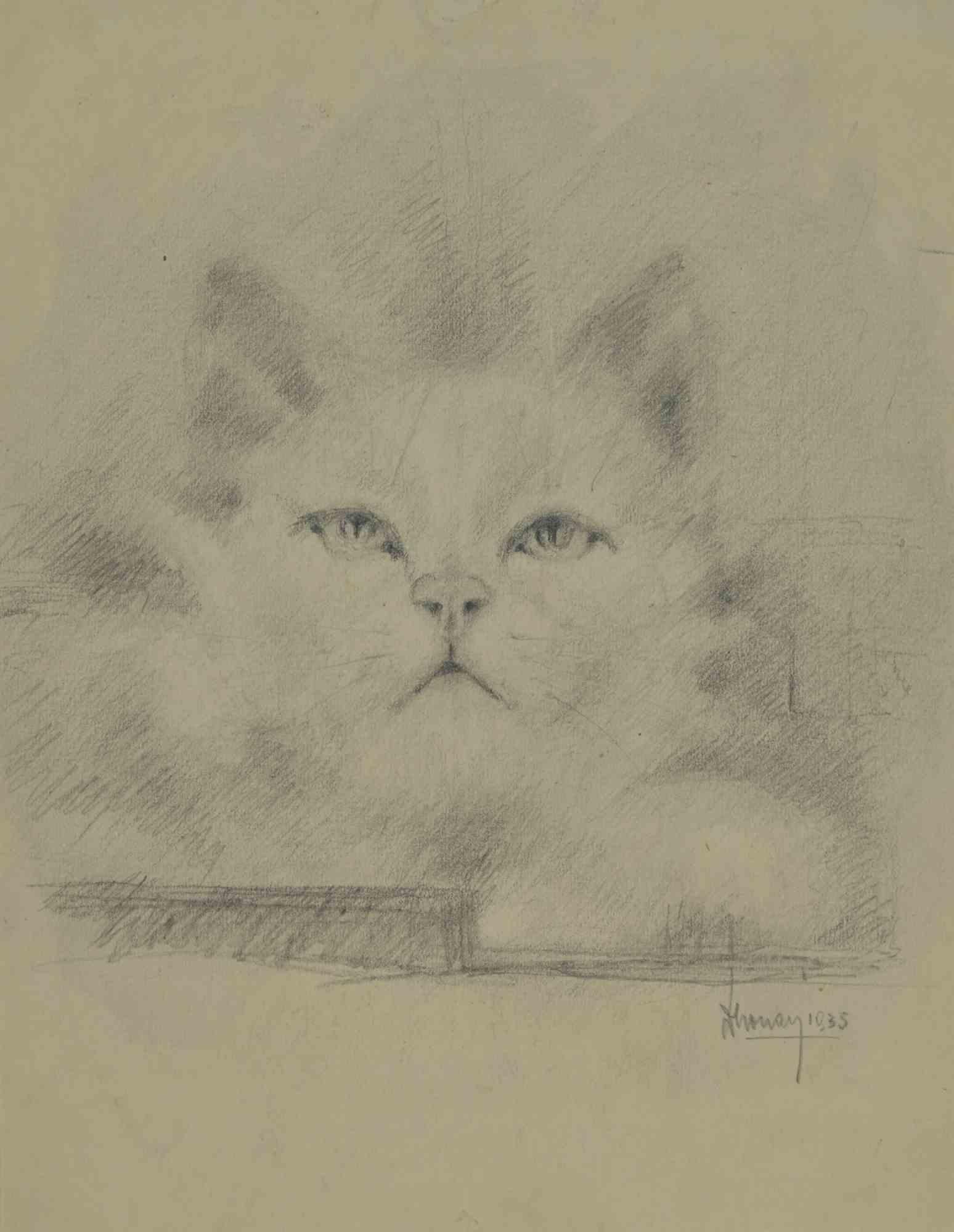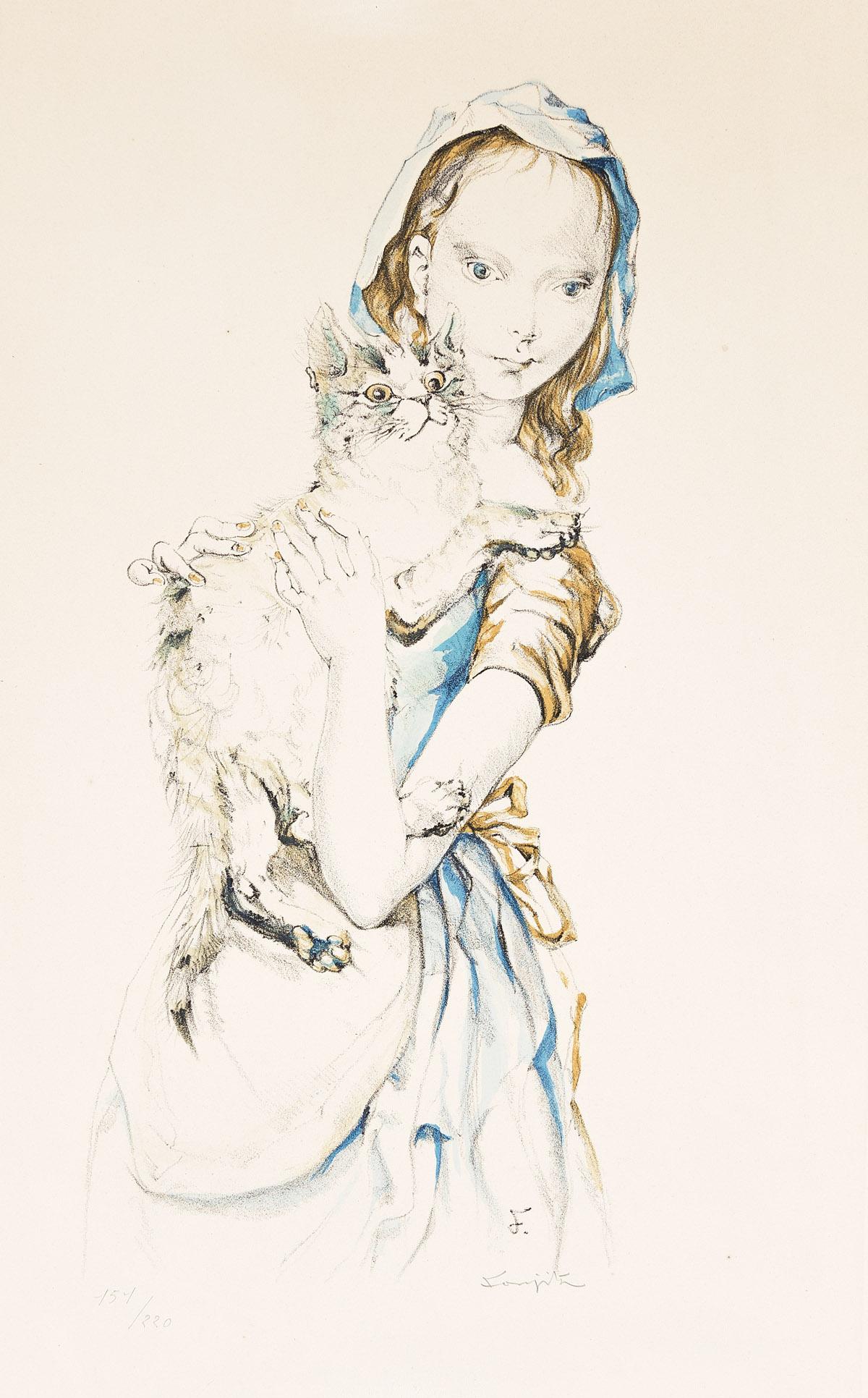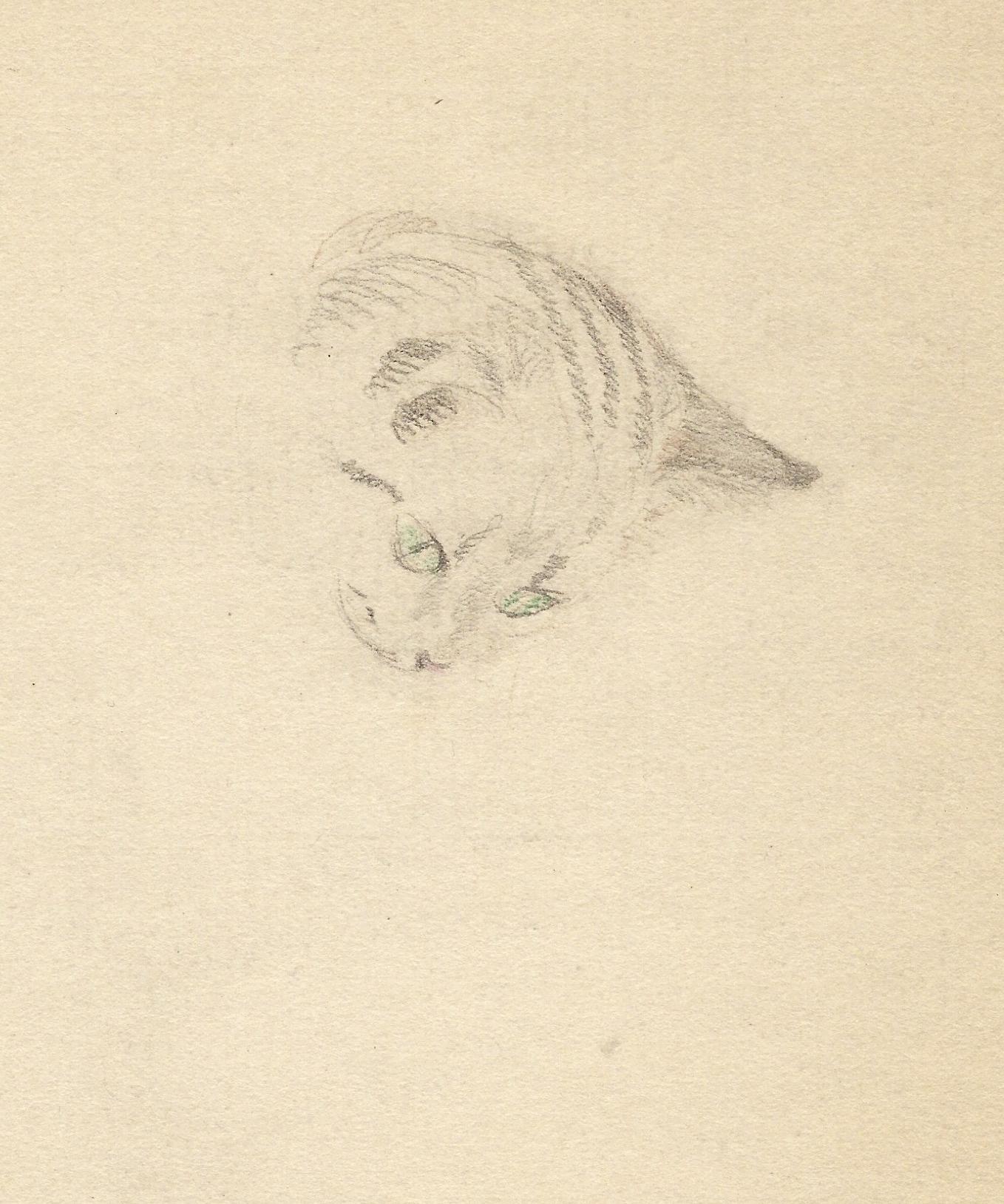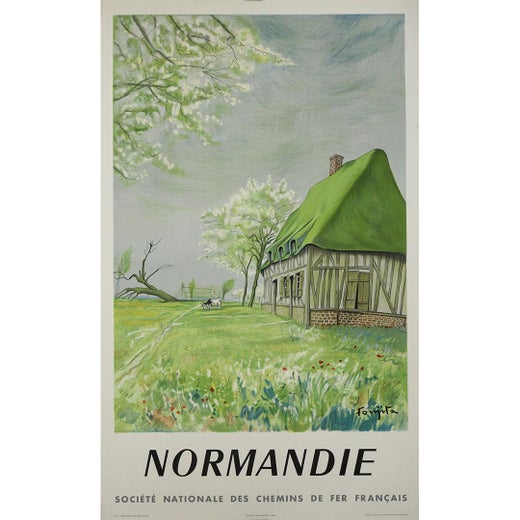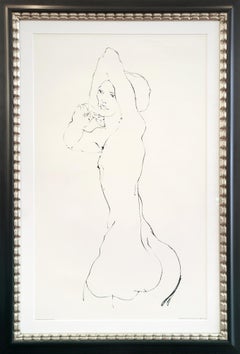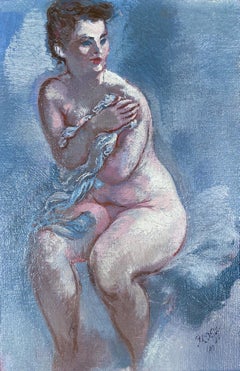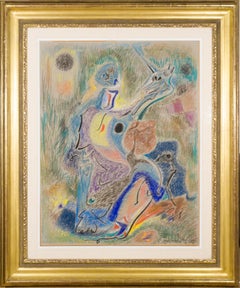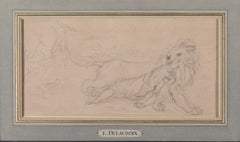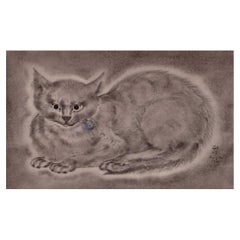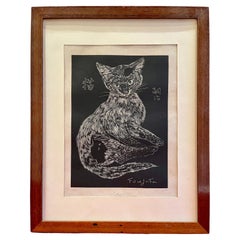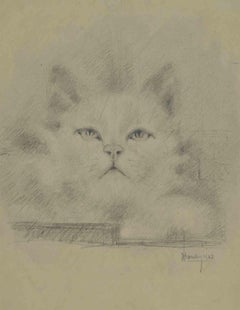Items Similar to Cat
Want more images or videos?
Request additional images or videos from the seller
1 of 2
Léonard Tsugouharu FoujitaCat1929
1929
$3,500
£2,675.96
€3,065.96
CA$4,936.77
A$5,374.89
CHF 2,870.02
MX$64,883.32
NOK 36,081.28
SEK 33,559.79
DKK 22,901.19
About the Item
Tsuguharu Foujita (also known as Léonard Tsuguharu Foujita) was born in Tokyo, Japan, on November 27, 1886, to an upper-class family. From an early age, Tsuguharu learned French and had ambitions to be a successful artist in Europe. In 1913 he moved to Paris, where he spent the majority of his life and cultivated an artistic circle that included Pablo Picasso, Henri Matisse, and Amedeo Modigliani in the creative and bustling Montparnasse district. Tsuguharu Foujita thrived in Paris early on, selling out his debut solo exhibition of 110 pieces on the first day.
In Paris, he became known for hosting luxurious parties with his creative friends and models, who served as his muses. The extravagant lifestyle caught up with him when he was faced with a bill he could not pay and had to leave Paris. After a brief return to Tokyo at the start of World War II, Foujita traveled to the United States before eventually moving back to Paris for good. He became a French citizen in 1955 and even converted to Catholicism with the baptismal name of Léonard in 1959.
Tsuguharu Foujita’s love of cats was clearly apparent from his vast collection of cat drawings and prints. He loved that they could be both wild and domestic. But it wasn’t just Foujita who had a passion for cats. Cats are a symbol in Japanese art and culture of good luck and fortune. It’s no surprise that Foujita is just one of many Japanese cat portrait artists throughout history.
Due in part to the desirability of Léonard Tsuguharu Foujita cat drawings, the artist published a limited-edition book of cat drawings in 1930. The book is highly sought after and features twenty etched plate drawings of realistic cats, each one named and with a corresponding poem.
- Creator:Léonard Tsugouharu Foujita (1886-1968, French, Japanese)
- Creation Year:1929
- Dimensions:Height: 10.5 in (26.67 cm)Width: 8 in (20.32 cm)
- Medium:
- Period:
- Condition:
- Gallery Location:New York, NY
- Reference Number:1stDibs: LU1637216391002
Léonard Tsugouharu Foujita
Léonard Tsugouharu Foujita was a painter and printmaker, born in 1886 in Edogawa, Tokyo. He received his formal training at the Imperial School of Fine Arts, quickly attracting success with commissions from the emperors of Korea and Japan. In 1913, he traveled to Paris, immediately befriending many of the leading painters of the day, including Pablo Picasso, Juan Gris, Henri Matisse, Henri Rousseau, and Chaim Soutine. He struck up a particularly close friendship with the famous Italian artist Amedeo Modigliani. Known for his eccentric personality, Foujita developed a colorful reputation through his cropped hairstyle, hoop earrings, and glasses. But beyond his public image, Foujita took his work very seriously, displaying a fondness for white and pale shades like lavender and gray. Foujita walked a fine line between Japanese and European art and was repeatedly inspired by women and cats. Following the breakup of his third marriage, Foujita left Paris for Latin America, spending time in Brazil, Mexico, Cuba, and Argentina, before eventually returning to Japan, where he lived during World War II. Following the war, Foujita again left Japan for France, eventually becoming a citizen in 1955. Later in life, Foujita converted to Catholicism, and decorated a cathedral in the city of Reims. Foujita then adopted the Christian name Léonard, in homage to Leonardo da Vinci, and was buried in Reims following his death in 1968 at the age of 81. Today, his work can be found in numerous public collections including the Hiroshima Museum of Art, the National Museum of Modern Art and the National Museum of Western Art in Japan
About the Seller
5.0
Platinum Seller
Premium sellers with a 4.7+ rating and 24-hour response times
Established in 1948
1stDibs seller since 2021
14 sales on 1stDibs
Typical response time: 1 hour
- ShippingRetrieving quote...Shipping from: New York, NY
- Return Policy
More From This Seller
View AllRÜCKSEITE AKTSTUDIE
By Egon Schiele
Located in New York, NY
(After) Egon Schiele
Marked on the bottom:
EGON SCHIELE, RÜCKSEITE AKTSTUDIE, 1912
PUBLISHED BY MULTIPLA s.r.I., PARMA, ITALY, 1988
© BY SIAE, 1988
Label on Reverse specifies no. ...
Category
Late 20th Century Expressionist Figurative Prints
Materials
Paper, Screen
Seated Nude
By George Grosz
Located in New York, NY
Seated Nude by George Grosz (1893-1959)
Oil on canvas
9 ½ x 5 ½ inches unframed (24.13 x 13.97 cm)
15 x 12 inches framed (38.1 x 30.48 cm)
Signed on bottom...
Category
20th Century Expressionist Figurative Paintings
Materials
Oil
La Velleda
By André Masson
Located in New York, NY
La Velleda, circa 1947, by Andre Masson (1896-1987)
Pastel on paper
35 ½ in x 28 ¾ inches unframed (90.17 x 73.03 cm)
50 ¼ x 42 ¾ inches framed (127.64 x 108.59 cm)
Signed lower righ...
Category
Mid-20th Century Surrealist Abstract Drawings and Watercolors
Materials
Pastel
Price Upon Request
Étude Pour Une Chasse au Lion
By Eugène Delacroix
Located in New York, NY
Étude pour une chasse au lion by Eugene Delacroix (1789-1863)
Catalogue raisonne reference: Alfred Robalt 733.
Christie’s provenance.
Description:
Eugene Delacroix was a famous French Romantic painter whose career is seen to this day as imperative in the shaping of the French Romantic school. He studied at the Lycee Louis-le-Grand and Lycee Pierre Corneille. He was inspired by Baroque painters like Peter Paul Rubens, incorporating the extravagance of early Flemish painting into his work. He was often seen as in direct opposition to the established French Neoclassical school which included artists like Ingres and David. Nevertheless, Delacroix maintained his career as an artist through history paintings and later political paintings such as "Liberty Leading the People...
Category
Mid-19th Century Romantic Animal Drawings and Watercolors
Materials
Paper, Pencil
Old Tree and September Wind Clouds
By Charles E. Burchfield
Located in New York, NY
Old Tree and September Wind Clouds, 1961, by Charles Burchfield (1893-1967)
Conte crayon on paper
13 ½ x 19 ½ inches unframed (34.29 x 49.53 cm)
19 ¾ x 25 ½ inches framed (50.165 x 6...
Category
1960s American Modern Landscape Drawings and Watercolors
Materials
Paper, Conté
La Tour Eiffel Verte
By Marc Chagall
Located in New York, NY
A rare signed, original, artist's proof lithograph (épreuve d'artiste). Throughout his career, Chagall produced colored lithographs such as “La Tour Eiffel...
Category
Mid-20th Century Modern Figurative Prints
Materials
Lithograph
You May Also Like
Foujita Tsuguhanu (1886-1968). Etching on paper. Trial proof. Portrait of a cat
Located in København, Copenhagen
Foujita Tsuguhanu (1886-1968), a well-listed Japanese artist.
Etching on paper laid on board. Trial proof. Portrait of a cat.
In excellent condition with slight wear on the edges. Wo...
Category
Vintage 1920s French Prints
Materials
Paper
$1,400 Sale Price
30% Off
Tsuguharu 'Léonard' Foujita, Cat 1927, Proof on Vellum, 20th Century
By Léonard Tsuguharu Foujita
Located in Beaune, FR
Proof on vellum of a cat signed in "Foujita" ink and numbered 105/160. Excellent condition and very good proof.
This work appears in the catalog raisonné established by Sylvie Buis...
Category
20th Century Asian Decorative Art
Materials
Parchment Paper
$7,031 Sale Price
20% Off
Cat - Original woodcut, Handsigned and Numbered /160 - Buisson #27-03
By Léonard Tsuguharu Foujita
Located in Paris, IDF
Leonard Tsuguharu FOUJITA
Cat, 1927
Original woodcut
Handsigned with ink
Numbered /160
Bears the blind stamp of the editor (Lugt 1140a)
On Vellum 32.5 x 25.5 cm (c. 13 x 10 inch)
R...
Category
1920s Modern Animal Prints
Materials
Woodcut
The Kitten - Drawing by Augusto Monari - Early 20th Century
Located in Roma, IT
The Kitten is a Drawing in pencil realized by Augusto Monari in the Early-20th Century.
Hand-signed on the lower.
Good conditions, including a creamy-colored Passepartout.
The art...
Category
Early 20th Century Modern Figurative Drawings and Watercolors
Materials
Pencil
Jeune Fille au Chat
By Léonard Tsuguharu Foujita
Located in New York, NY
A very good impression of this color lithograph. Artist's proof, aside from the edition of 220. Signed and inscribed "E.A." in pencil by Foujita. Printed by the Guilde de la Gravure,...
Category
1950s Modern Abstract Prints
Materials
Color, Lithograph
A Charming 1920s Sketchbook Drawing of a Cat, by Florida Artist George Snow Hill
Located in Chicago, IL
A Charming 1920s Sketchbook Drawing of a Cat, by Florida WPA Era Artist, George Snow Hill. Colored pencil and graphite on paper, dating circa 1929. Sheet size: 6 1/2 x 5 inches, u...
Category
1920s Animal Drawings and Watercolors
Materials
Paper, Color Pencil, Graphite
